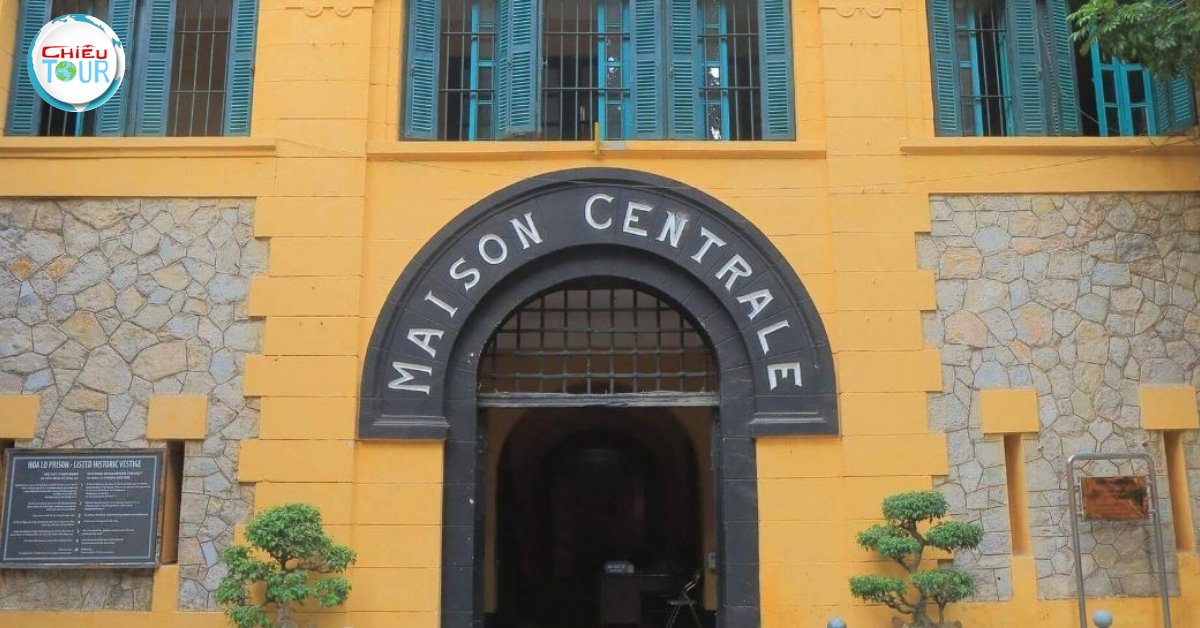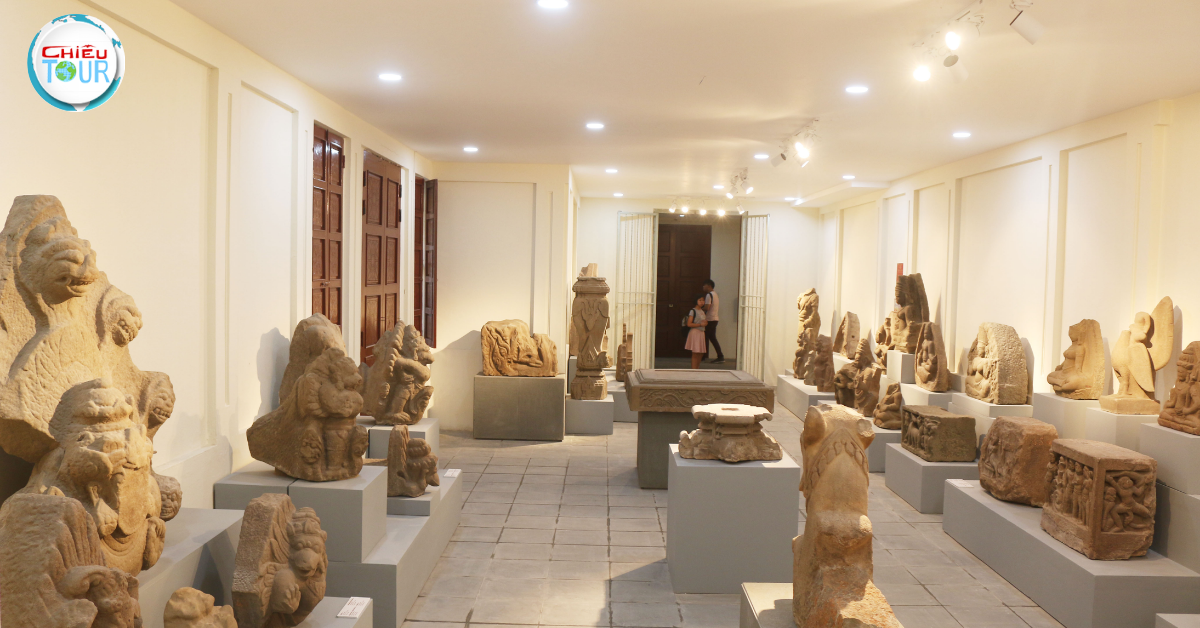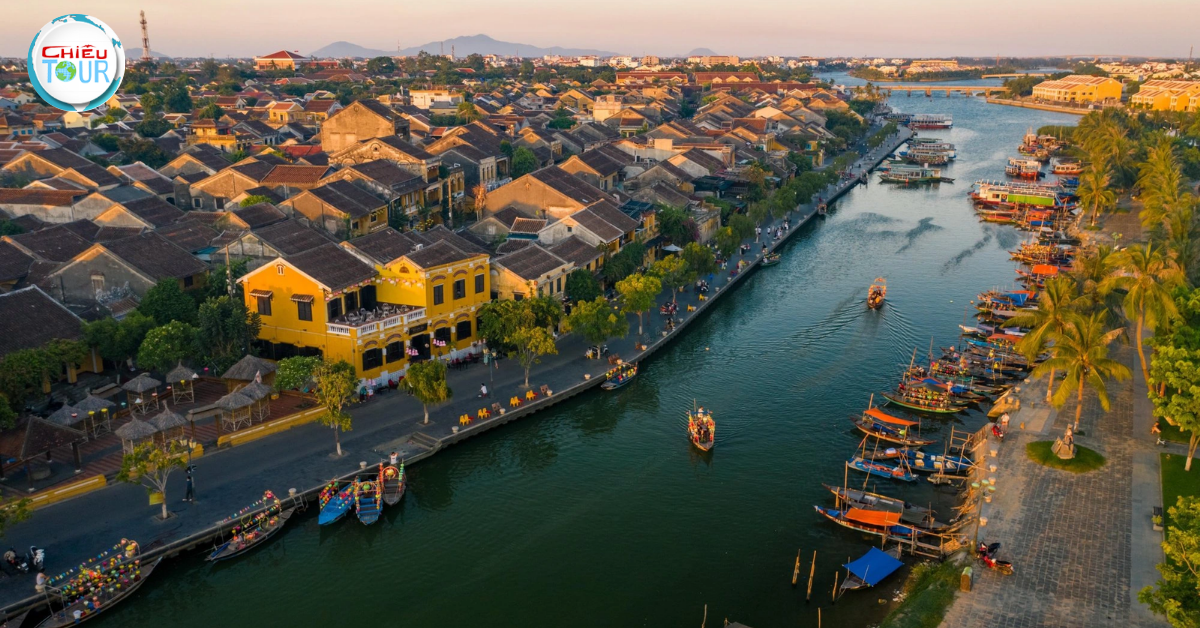Visiting Thien Hau Temple: A Beautiful Symbol in Saigon's Spiritual Culture
- Author: Admin
- | Hot destination
Where is Thien Hau Temple located?
Thien Hau Temple is situated in District 5 of Ho Chi Minh City, a vibrant area known for its blend of cultures and historical significance. The temple lies on Nguyen Trai Street, which is a hub for both locals and tourists alike.
This central location makes it easily accessible and places it within proximity to other notable landmarks such as Cholon, the city’s Chinatown. Cholon is filled with bustling markets and shops, reflecting the Chinese influence that permeates this part of the city. The intersection of Nguyen Trai and Tran Hung Dao streets leads visitors directly to the temple, which stands out with its traditional architecture amidst the city's modern developments.
As you approach Thien Hau Temple, the sounds of daily life - street vendors hawking their wares, the scent of incense wafting through the air - create an immersive experience that prepares you for the spiritual journey ahead. The temple is surrounded by lush trees and vibrant flowers, inviting visitors to enter a sacred space where time slows down, allowing for contemplation and connection with the divine.
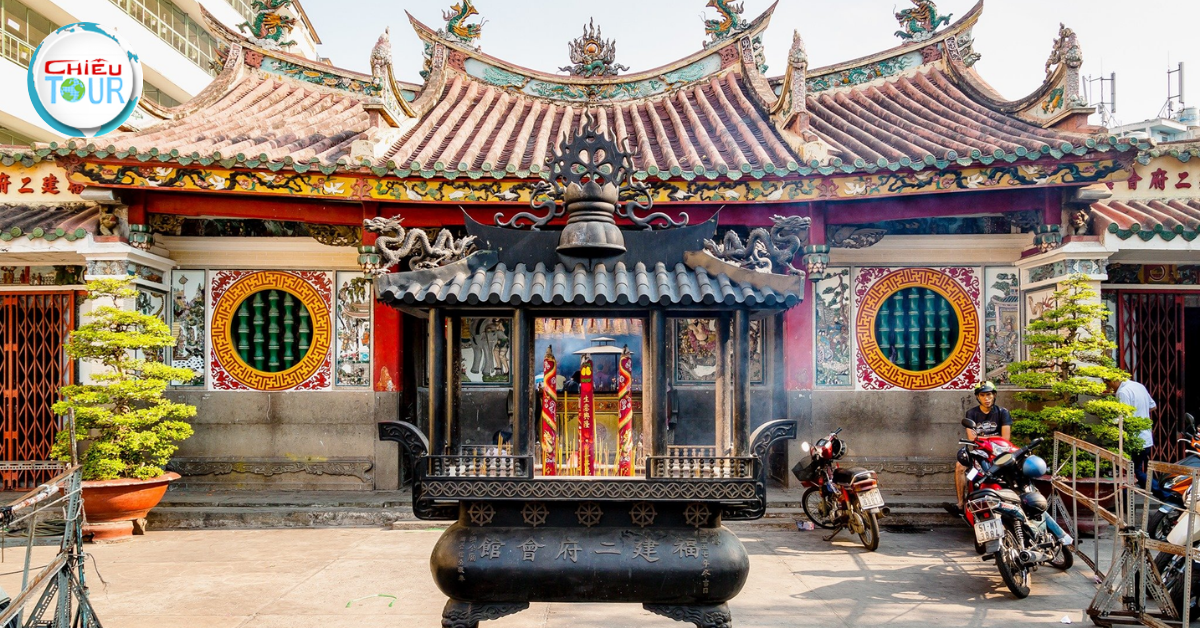
A Brief Overview of District 5
District 5 is often referred to as the "Chinatown" of Ho Chi Minh City, and rightly so, as it is one of the oldest areas in the city heavily influenced by Chinese immigrants. The streets are alive with the sights and sounds of markets, restaurants, and tea houses that serve authentic Chinese cuisine.
In addition to its culinary offerings, District 5 is home to numerous temples, pagodas, and historic buildings that reflect the diverse cultural heritage of the region. Visitors can explore the bustling Binh Tay Market, known for its colorful stalls selling everything from textiles to spices, or wander through the narrow alleyways lined with traditional shophouses.
The juxtaposition of modernity and tradition within District 5 enhances the allure of Thien Hau Temple as both a spiritual retreat and a cultural landmark. It serves as a reminder of the community's deep-rooted beliefs and practices while highlighting the ongoing evolution of urban life in Saigon.
What to Explore at Thien Hau Temple in District 5?
Thien Hau Temple stands as a testament to the enduring spirit of the Vietnamese people and their dedication to their spiritual beliefs. As you venture inside, the atmosphere is imbued with a sense of reverence that invites exploration.
The temple complex provides ample opportunities for visitors to engage with its rich history, unique architecture, and lively traditions. From the stories of the Holy Mother Thien Hau to the intricate designs of the temple itself, each aspect provides a deeper understanding of its significance in the local culture.
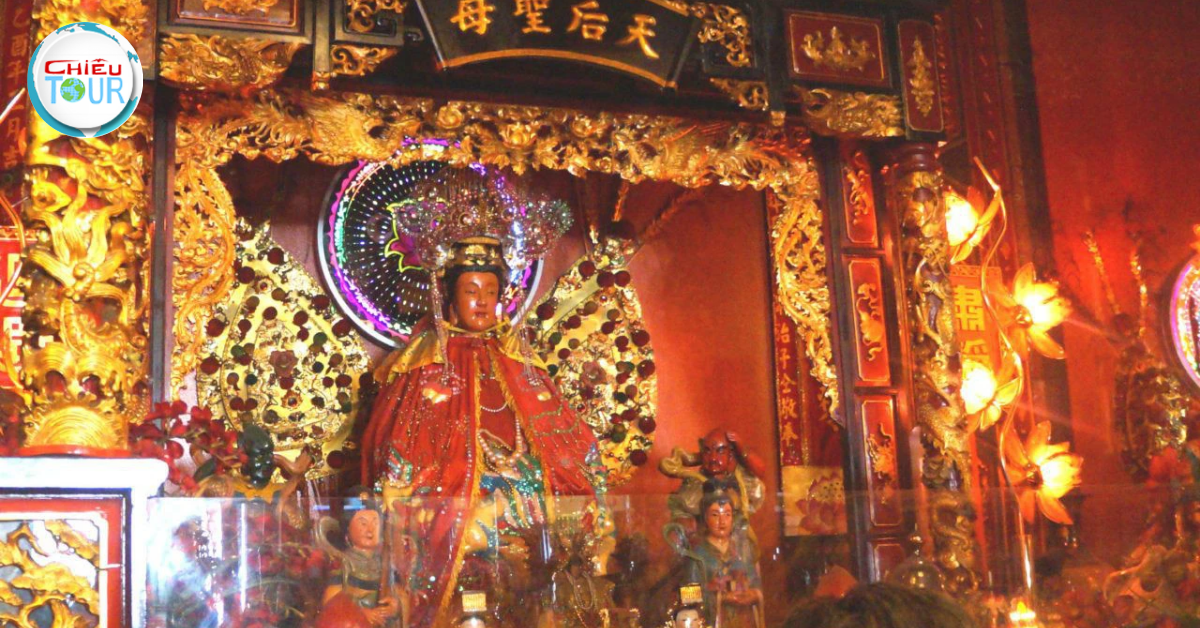
The Origin of Thien Hau Temple in Ho Chi Minh City
To truly appreciate Thien Hau Temple, one must delve into its origins, steeped in legend and history. The temple is dedicated to Thien Hau, the Goddess of the Sea, who is believed to protect fishermen and sailors. Her story resonates with many Vietnamese families, especially those with maritime ties.
The Legend of the Holy Mother Thien Hau
According to folklore, Thien Hau was born in China and possessed extraordinary powers, including the ability to calm storms and save lives at sea. The legends tell of her compassion and bravery, as she would guide lost souls back to shore.
Her devotion to helping those in need has made her a beloved figure among coastal communities. Over time, her cult spread across Southeast Asia, especially among the Chinese-Vietnamese population in Ho Chi Minh City. This devotion culminated in the establishment of Thien Hau Temple, where people come to pay homage to the goddess and seek her blessings for safe voyages.
The History of Thien Hau Temple
Originally built in the late 18th century, Thien Hau Temple has undergone several renovations throughout the decades. The temple reflects the architectural style commonly found in Southern China, incorporating elaborate carvings, intricate tile work, and vibrant colors.
During its long history, the temple has been a focal point for religious and cultural activities in the community. Celebrations, offerings, and rituals are performed regularly as a way for devotees to express gratitude and seek guidance. The temple bears witness to the resilience and devotion of the Vietnamese people and their connection to their spiritual roots in the face of modernization.
The Architecture of Thien Hau Temple Reflecting Chinese Influence in District 5
The architectural design of Thien Hau Temple showcases the artistry and craftsmanship typical of traditional Chinese temples. Each element is meticulously crafted, allowing visitors to appreciate the fine details that have been preserved over the years.
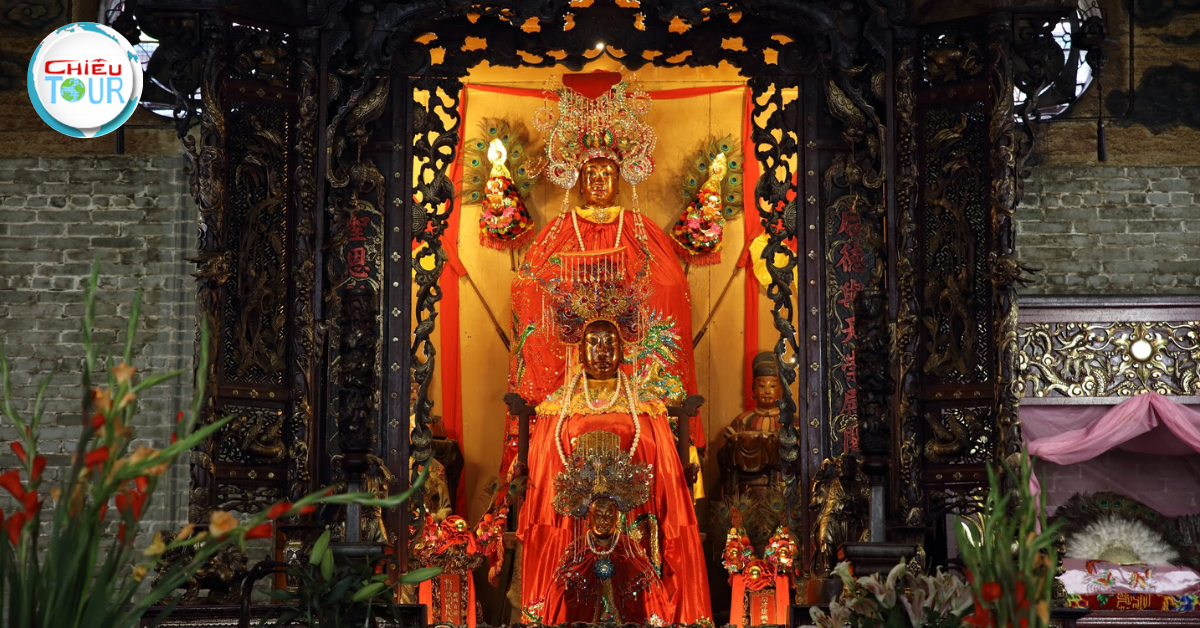
The Front Hall of Thien Hau Temple
Upon entering Thien Hau Temple, visitors are greeted by the Front Hall, characterized by its impressive wooden structure adorned with intricately carved beams and pictures of deities.
The hall serves as a gathering space for worshippers and features altars dedicated to various gods and goddesses. Visitors can observe prayer rituals, where incense is burned and offerings of fruit and flowers are presented. The ambiance created by the flickering candles and the fragrant incense creates a serene environment for personal reflection and prayer.
The Main Hall of Thien Hau Temple
Moving further into the temple, the Main Hall captivates with its grandeur. Here, a majestic statue of Thien Hau takes center stage, surrounded by ornate decorations that symbolize her divine power.
The hall is adorned with colorful murals depicting scenes from the goddess's life and her connections to the sea. The meticulous craftsmanship reflects the deep respect and devotion the community holds for Thien Hau. Visitors often take the time to sit quietly, absorbing the energy of the space and offering their wishes or prayers.
The Rear Hall (Main Sanctuary) of Thien Hau Temple
One of the most sacred areas of the temple is the Rear Hall, which serves as the main sanctuary. This dimly lit space is reserved for more intimate worship and contains additional statues and altars dedicated to various deities.
Visitors may find themselves drawn to the peaceful ambiance, where the soft glow of candles illuminates the intricate carvings and paintings that adorn the walls. It's an ideal spot for meditation, allowing visitors to connect with their inner selves and contemplate their desires and aspirations.
Valuable Artifacts Preserved at Thien Hau Temple
Within Thien Hau Temple, countless artifacts serve as reminders of the temple's storied history. From ancient talismans to intricate sculptures, each piece carries with it a tale waiting to be discovered.
Many of these artifacts hold spiritual significance and are often used in rituals performed by priests during ceremonies. Some items, such as altars and ceremonial objects, date back centuries, showcasing the temple's commitment to preserving its cultural heritage.
The presence of these valuable artifacts adds depth to the visitor's experience, offering a tangible link to the past and a reflection of the ongoing devotion to Thien Hau and the broader spiritual culture in Saigon.
What Interesting Things Can Be Found at Thien Hau Temple in District 5?
As you explore Thien Hau Temple, you'll discover a myriad of experiences that go beyond mere sightseeing. The temple serves as a living embodiment of Saigon's spiritual culture, offering visitors a chance to engage with its customs, rituals, and vibrant atmosphere.

Ideal "Nostalgic" Photo Spots
Photography enthusiasts will find Thien Hau Temple to be a treasure trove of captivating visuals. The striking architecture, vibrant colors, and unique features all provide the perfect backdrop for memorable photos.
From the intricate details of the carvings to the enchanting play of light filtering through the incense smoke, every corner of the temple tells a story waiting to be captured. Many visitors take the opportunity to pose near the impressive statue of Thien Hau, creating memories that will last a lifetime.
Furthermore, the surrounding gardens and courtyards offer a touch of nature amidst the historical setting. These picturesque spots allow for contemplation and relaxation, adding to the overall charm of the temple grounds.
A Place for Prayer and Divine Fortune Telling
For many, Thien Hau Temple is more than just a tourist attraction; it is a sacred space where individuals come to pray, seek guidance, and participate in divine fortune telling. One common practice observed here is the ritual of asking for a sign from the goddess.
Devotees often shake a container filled with bamboo sticks until one falls out, which corresponds to a specific number linked to a fortune written on paper. This ancient method of divination encourages reflection and introspection, allowing individuals to gain insights into their lives and future.
The temple's priests and caretakers are always available to assist visitors in understanding the process, making it an interactive experience for those curious about the local spiritual customs. Engaging in this activity not only fosters a deeper connection with the temple but also opens the door to personal revelations.
The Largest "Via Ba" Festival in Saigon
One of the most significant events associated with Thien Hau Temple is the annual "Via Ba" festival, a vibrant celebration dedicated to the goddess. The festival attracts thousands of participants, both locals and tourists, who come to honor Thien Hau and partake in the festivities.
During the festival, the temple is adorned with colorful decorations, and a variety of traditional performances take place, including lion dances, music, and theatrical displays. Participants engage in rituals, making offerings and seeking blessings for health, happiness, and prosperity.
The atmosphere is electric, filled with laughter, joy, and a sense of community as people come together to celebrate their shared faith. This event highlights the importance of tradition in Vietnamese culture and allows visitors to witness the devotion of the local community firsthand.
Conclusion
Visiting Thien Hau Temple: A Beautiful Symbol in Saigon's Spiritual Culture offers a profound glimpse into the rich spiritual landscape of Ho Chi Minh City. The temple's sacred atmosphere, coupled with its historical significance and architectural beauty, makes it a must-visit destination for anyone interested in exploring Vietnam's cultural heritage.
From its origins rooted in legend to its thriving contemporary practices, Thien Hau Temple serves as a beacon of faith and connection for both locals and visitors alike. Whether you're seeking spiritual enlightenment, wishing to immerse yourself in the local culture, or simply looking for a tranquil escape from the bustling city, Thien Hau Temple delivers an experience that transcends the ordinary.
As you leave the temple grounds, the memory of your visit lingers, reminding you of the timelessness of faith, the beauty of cultural expressions, and the kindness of a community deeply tied to their beliefs. Thien Hau Temple is not merely a monument to the past; it is a living, breathing symbol of the spiritual essence that continues to shape the lives of those who call Saigon home.
 Vietnam
Vietnam 
